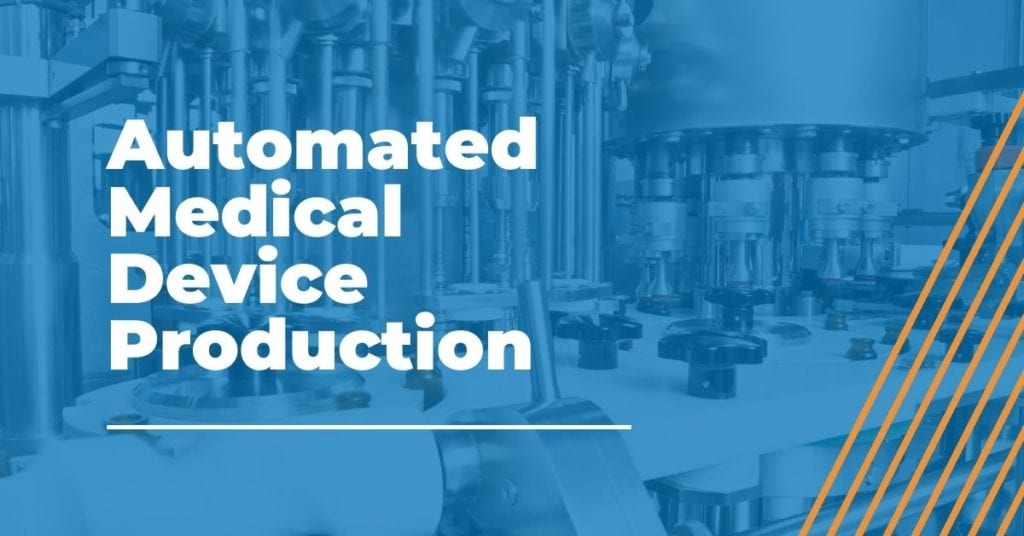
Medical Device Production: Using Automation to Optimize Manufacturing
Successful medical device production results from great designs with early supplier involvement and integrated manufacturing operations. In this article, we discuss how to use automation to optimize medical device manufacturing to make the process efficient, repeatable and traceable.
Optimize Medical Device Production
Optimization is essential to a successful medical device assembly operation. It can come in the form of materials, processes, automation, vendors, logistics or equipment. Let’s look at how automation can help optimize medical device manufacturing.
Cost
Cost is a big driver for optimizing manufacturing operations. From materials to labor to time, the price of a product can be reduced using automation, such as automated leak testing for tubes and catheters and automated ultrasonic welding for surgical instruments, wearable infusion devices and PPE. Automating these steps of production saves time and labor, resulting in cost savings for the manufacturer. Those are just two examples of ways to incorporate automation to optimize medical device manufacturing for cost.
Performance
Performance is another way automation helps improve medical device manufacturing. Using automation ensures the same process is completed on each part and to the specifications required, ensuring the product’s performance in the field. It also increases factory performance by:
- Shortening throughput times.
- Potentially decreasing excess materials.
- Reducing labor hours so products can ship faster.
Quality and Reliability
The final way automation optimizes factory productivity is by increasing its quality and reliability. Automation allows for repeatable and traceable processes. There is less room for human error or fatigue. The FDA has strenuous regulations for medical device equipment, so it’s imperative that there are no questions about quality.
Early Supplier Involvement
From concept to prototyping to full product FDA certification, the manufacturing process should be optimized to meet the customer’s needs. Working with suppliers early on and often can ensure those requirements are “designed in.”
“The earlier we can get involved the better because we can advise on when and how to optimize the customer’s production process and timeline depending on their specific needs,” says Chris Edwall, AMS vice president and general manager.
AMS has designed multiple medical device production automation systems to optimize their manufacturing. Between our design experience, FDA regulations expertise and our successful 17-step process, our engineers can solve any medical device manufacturing automation challenge. Book an appointment today or read our case study to learn more.
Our Automated Medical Manufacturing White Paper Will Help You Envision New Ways of Operating
Reading this white paper will help you:
